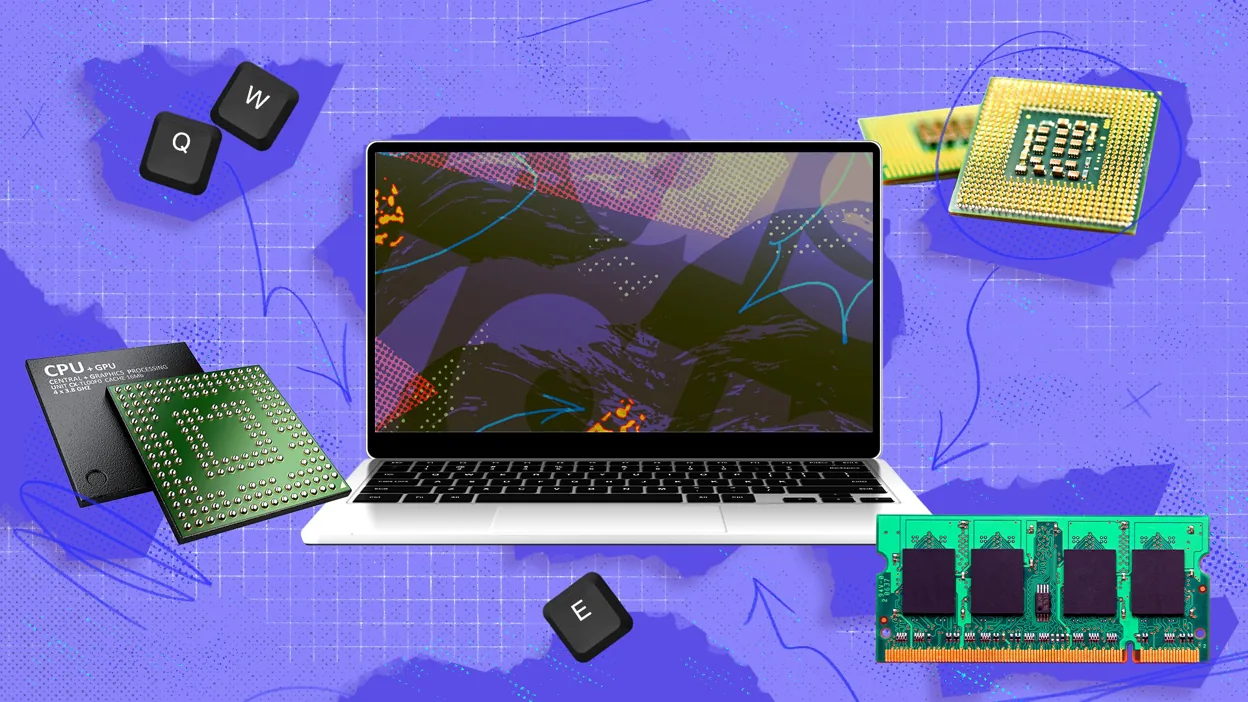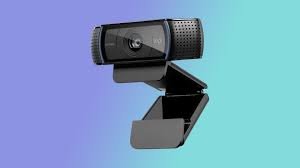Shopping for a laptop can be a headache when you’re bombarded with technical jargon and endless specs. But if you can get a handle on the basics, it’s way easier to pick something that actually fits your work, study, or downtime needs.

Knowing which parts matter most—like the processor, memory, storage, and display—lets you spot good deals and avoid the duds.
Whether you’re eyeing a MacBook, a Windows 11 laptop, or a Chromebook with ChromeOS, breaking down specs into plain English helps you compare and pick what actually fits your life.
Key Takeaways
- Laptop components like CPU, RAM, and display shape how well your device works.
- MacBooks, Windows laptops, and ChromeOS devices each have their own fans and use cases.
- Understanding the basics makes the buying process less painful.
Processor
The CPU is the heart of your laptop, handling all the instructions and running your programs. It’s right there on the motherboard and honestly, it’s one of the most important things to pay attention to.
Big names like Intel, AMD, and Qualcomm make CPUs for different needs and budgets. Intel’s lineup—Core i3, i5, i7, and i9—covers everyone from casual users to hardcore gamers or video editors.
For most folks, a Core i5 gets the job done. If you’re into heavier stuff like gaming or editing, a Core i7 or i9 is worth the splurge for more cores and features like hyper-threading.
AMD Ryzen chips are also solid, especially for multitasking or if you like to push your system a bit—overclocking can squeeze out extra speed when you need it.
Most Intel and AMD CPUs use x86-based ISAs, so they’ll run nearly any software you throw at them. Qualcomm’s Snapdragon chips, found in lighter laptops, use ARM architecture—they’re great for battery life but might not run every app out there.
Don’t forget to check the processor’s age. Newer generations—like the latest Intel Core i7 or AMD Ryzen—give you more power and a bit of future-proofing.
Your CPU also works hand-in-hand with the motherboard, storage, and other parts to keep things humming along.
Graphics Processor
A graphics processor (GPU) handles everything you see on the screen. If you do gaming, video editing, or dabble in VR, this is a big deal.
Integrated GPUs
Integrated GPUs live inside the CPU and share memory. They’re cheaper and use less power, so they’re perfect for web browsing, streaming, or office work.
But if you’re dreaming of playing the latest games or rendering 3D graphics, integrated graphics just won’t cut it. Intel CPUs usually come with Intel’s own integrated GPUs.
Discrete GPUs
Discrete GPUs (aka dedicated graphics cards) are separate from the CPU and have their own memory. They’re built for heavy-duty tasks—think gaming, editing, or running creative software.
They pack more punch, but eat up more battery, so you’ll probably need to plug in more often. Nvidia GeForce RTX cards, especially the RTX 40-series, are favorites for gamers and creators, thanks to features like ray tracing for lifelike lighting.
If you’re not chasing the absolute latest, older GPU models still handle most games and creative work just fine.
| Feature | Integrated GPU | Discrete GPU |
|---|---|---|
| Cost | Lower | Higher |
| Performance | Basic tasks | High-end tasks |
| Battery Efficiency | Better | Lower efficiency |
Think about how much power you really need, what you want to spend, and if you’ll be carrying your laptop around a lot before picking a GPU.
Memory
RAM is your laptop’s short-term memory. It stores what you’re working on right now, so more RAM means smoother multitasking.
For light stuff like email and docs, 8GB is usually enough. If you want to juggle a bunch of tabs or apps, 16GB is a safer bet and keeps things snappy for most people.
Gamers or content creators might want 32GB or more, especially if you’re dealing with big files or lots of programs running at once. RAM types matter too—DDR4 is faster than DDR3, so if you can, go for the newer tech.
Most RAM comes as sticks called DIMMs. If your laptop only has 2GB, it’s going to lag with modern software. And if you have a dedicated graphics card, it’ll use VRAM for graphics, which helps with gaming or design work.
Storage
Storage is where your stuff lives—photos, documents, games, you name it. Most laptops now use SSDs because they’re fast and reliable, but you’ll still see some with HDDs if you’re on a tight budget.
Budget models might use eMMC or UFS storage, but those are slower than SSDs. For most people, 256GB works, but 512GB is more comfortable, especially if you play games or keep lots of media.
If you need tons of space, look for higher capacities. Remember, the system itself takes up some storage, so you’ll always have a bit less than what’s advertised.
Display
Screen Dimensions
Laptop screens range from 13 to 17 inches. Smaller ones are light and easy to carry, great for travel or basic tasks.
Bigger screens give you more room for multitasking or watching movies. If you use an external monitor, you might not care much about the built-in screen size.
Screen Type
The panel type really affects how your screen looks. OLED screens pop with color and deep blacks—awesome for movies or games.
IPS panels are good for color accuracy and wide viewing angles, while LCDs are more basic but get the job done.
Pixel Display Clarity
Resolution is all about sharpness. 1080p is standard and works for most, but 1440p looks crisper without being too demanding on your hardware.
If you want super sharp images, 4K is out there, but unless you have a beefy GPU, it might slow things down.
Frame Refinement
Refresh rate tells you how many times per second your screen updates. Most laptops do 60Hz, but 120Hz or 144Hz looks way smoother, especially for gaming or fast video editing.
Brightness Levels
Brightness makes a difference outdoors or near windows. Standard screens hit around 250 nits, but nicer laptops can go up to 500 nits or beyond.
If you’re always on the go, look for adaptive brightness—it automatically tweaks the screen for your environment.
Webcam

Most modern laptops come with webcams built in, usually right along the top edge of the display. MacBooks, for example, tuck the camera into a small notch at the top of the screen.
Many of these cameras have physical privacy covers that you can slide over manually. It’s a simple touch, but it adds a bit of peace of mind.
Laptop webcams have moved toward higher resolutions over the last few years. While some older or gaming models still stick with 720p, 1080p is now pretty common.
There are even options with 5MP, 9MP, or 12MP sensors, though you’ll usually find those on pricier machines. Still, built-in webcams just don’t match the quality of most smartphone cameras, especially for video calls.
Because of that, quite a few people end up grabbing an external webcam for better clarity and more features.
Keyboard
The keyboard really shapes how a laptop feels to use day-to-day. Most new laptops use island-style keyboards (or chiclet keyboards), which have flat, widely spaced keys.
This design helps cut down on typos and feels comfortable for long typing sessions. If you type a lot or play games, anti-ghosting is worth looking for.
Anti-ghosting lets the keyboard register several keys at once, which matters for fast typing or gaming combos. It’s especially handy if you’re juggling spreadsheets or gaming marathons.
Keyboard size and layout change based on the laptop. Smaller laptops use compact keyboards and might skip some keys, while bigger models often fit in a full-size layout with a number pad.
Backlit keys are also a nice touch, making it way easier to type in dim rooms or on late-night flights.
Touchpad or Trackpad
The touchpad (or trackpad, if you prefer) sits below the keyboard and acts as your mouse. Budget laptops usually use plastic for the surface, while higher-end ones go with glass for a smoother feel.
Some touchpads support gestures, like two-finger scrolling or pinching to zoom, which can be surprisingly useful. On premium models, haptic feedback adds a little buzz or tap when you click, drag, or rotate—just a small detail, but it feels satisfying.
Connections and Interfaces
Laptops come with a mix of ports and wireless features for connecting all sorts of gear. USB-C is everywhere now, and some laptops also offer Thunderbolt 4 for blazing-fast data transfers.
Some models still include USB-A, but it’s slowly fading out. Most laptops give you a 3.5mm headphone jack for audio, and you’ll often find HDMI for hooking up external displays or SD card slots for photos and videos.
Ethernet ports aren’t as common these days, but they’re still important if you need a rock-solid wired connection. Wireless-wise, Wi-Fi and Bluetooth are standard.
All these interfaces make it easier to plug in everything from monitors to headphones. It’s a bit of a juggling act, honestly, but at least there are options.
Battery Performance
Battery life is basically how long your laptop lasts on a single charge. It depends on what’s inside, your settings, and how you use it.
Heavy tasks like gaming or editing video will eat up battery faster, while just browsing the web stretches things out. Brands love to advertise “up to 18 hours,” but in real life, it’s usually less.
If you tweak your settings or change how you use your laptop, you can sometimes squeeze out a bit more time. There’s always a bit of a gap between the marketing and what you actually get.
Weight
Laptops keep getting slimmer and lighter, which is great for carrying them around. Lightweight models come in under three pounds, so tossing one in a backpack is no big deal.
On the flip side, heavier laptops often pack more powerful hardware. If you’re gaming or creating content, those extra pounds might be worth it.
Honestly, the right balance between weight and performance comes down to what you care about most.
Key Considerations for Choosing the Right Laptop

Picking the right laptop really depends on what you need it for. If you’re focused on productivity—think spreadsheets or editing docs—a business laptop like a Lenovo ThinkPad is tough to beat for durability and comfort.
Brands like Acer and Asus have solid lightweight options with long battery life, which is handy for travel or office life. Gamers, though, probably want to look at MSI or Alienware.
MSI laptops have a reputation for beefy hardware and flashy RGB lighting, while the Alienware m16 R2 is a favorite for intense gaming, thanks to its strong graphics and cooling. If your needs are more casual, the Apple MacBook Air—especially the 15-inch M4—is a classic pick.
It’s sleek, reliable, and macOS is easy to live with, whether you’re a student or a professional. For Windows fans, the Microsoft Surface Laptop balances portability and function in a compact 13-inch package.
Budget matters, of course. Plenty of affordable laptops from Acer or Asus blend price and features pretty well.
If you can, try checking out laptops in person at places like Best Buy. Seeing the build quality, screen, or keyboard for yourself can make the decision a lot easier.
Frequently Asked Questions
Which components are most important for laptop performance?
Several things matter for performance: the processor (CPU), memory (RAM), graphics card (GPU), and storage type. These work together to keep things running smoothly, whether you’re browsing, gaming, or editing video.
For regular use, a mid-range CPU and 8GB RAM are usually enough. If you run demanding apps, you’ll want a better GPU and more memory.
How does the processor influence a laptop’s capabilities?
The processor is basically the laptop’s brain. It decides how fast tasks get done and affects everything from loading apps to juggling multiple windows.
Intel and AMD are everywhere, with chips ranging from basic to powerhouses like the Intel Core i7 or AMD Ryzen 7 for heavier work.
Why is RAM important when choosing a laptop?
RAM lets your laptop handle more stuff at once. For simple tasks, 4GB can get you by, but 8GB is a safer bet for most people now.
If you multitask a lot, game, or use pro tools like video editors, go for 16GB or more. It really does help.
What is the role of storage size and type in a laptop?

Storage affects both speed and space. Solid-State Drives (SSDs) are much faster than old-school Hard Disk Drives (HDDs), so your laptop boots up and loads files quicker.
Most folks are fine with 256GB SSDs, but if you have tons of big files or lots of apps, you might need more room.
What should someone look for in a laptop’s graphics card?
The graphics card matters for gaming, 3D design, or video work. Integrated GPUs are fine for web browsing or streaming, but if you want smoother gameplay or creative power, something like an NVIDIA GeForce RTX 3060 is a solid choice.
High-end GPUs are a must if you’re a creative pro working with graphics-heavy software. It’s not just about gaming anymore.
How can display specifications be understood on laptops?
The display shapes how clear images look and how true the colors appear. Screen resolution matters—Full HD, for example, keeps things sharp.
Gamers should pay attention to refresh rate. Screen size can also make a difference, though it really depends on personal preference.
If you often work outside or under bright lights, you’ll want a screen with higher brightness or an anti-glare coating. That way, you can actually see what’s on your laptop without squinting.





































